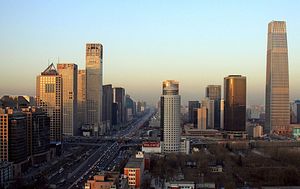China latest slew of economic data covering January and February gave this year’s first read on the state of the economy. The five main themes from the data break down as follows:
Chinese New Year distorted the trade picture: Exports dropped 1.3 percent year-on-year (y-o-y) in February compared with 7.9 percent y-o-y growth in January. However, rather than signaling a rapid slowdown in the export sector, the February numbers reflected the impact of Chinese New Year, which started in late January and extended into the first weeks of February. The extended holiday saw the closure of most of China’s factories and ports over the holiday period.
Credit growth remained high: China’s central bank stepped up liquidity management but credit issuance remained high in January and February. Total new loans in the period came to RMB 3.2 trillion ($462 billion), more or less flat y-o-y but up 28.5 percent compared with 2015 and 62.3 percent compared with 2014. Total social financing, a broader indicator of credit and liquidity that includes new loans, IPOs, bond sales, and trust lending, and other credit instruments, was up 16.4 percent y-o-y across January and February.
Investment growth picked up: Total fixed asset investment (FAI) in January and February grew 8.9 percent y-o-y, exceeding the 8.1 percent y-o-y increase in 2016, as the pace of private investment — which accounts for 60 percent of total FAI – quickened to 6.7 percent y-o-y, compared with 3.2 percent y-o-y in 2016. Government-led infrastructure spending rippled through the economy with FAI in rail projects growing 12.1 percent y-o-y, water networks increasing 19.1 percent y-o-y, and roads expanding 21.6 percent y-o-y. Real estate investment picked up too, growing 8.9 percent y-o-y,
Inflationary pressure intensified: PPI, China’s index of producer prices, grew 7.8 percent y-o-y in February, a nine-year high, on rebounding commodities prices. Consumer price growth remains well under the government’s 3 percent target but some CPI components, such as rents, healthcare and service prices, are growing. CPI could accelerate through the year, especially if commodity prices continue their recent upward trend.
Consumer demand stayed robust: Headline retail sales growth may have slowed to 9.5 percent y-o-y in January and February — the first time growth has come in below 10 percent since 2003 — but consumer demand remained otherwise strong. Auto sales, a key retail component, fell 1.1 percent y-o-y, after the government raised taxes on small-engine cars. However, stripping out the auto sales component shows that retail sales grew 10.6 percent y-o-y, with online retail growing 31.9 percent y-o-y, indicating that consumer sentiment remained solid.
All of this adds up to a solid start to 2017 for the Chinese economy, albeit one that appears to be priced in by the markets because the Shanghai Composite Index has hardly moved during the past week.
One key element of China’s outlook for 2017 is state-led investment, particularly on infrastructure, and its relationship with local government debt. With this in mind, we’ll be looking into the debt picture more closely next week with a focus on the recent expansion in public-private partnership financing and its implications for local government finances.

































